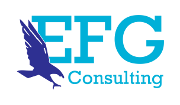The Duqm special economic zone in Oman is already attracting investors in its bid to become a major industrial and logistics hub right outside the Strait of Hormuz. One a quiet fishing village on the southern coast of the Arabian peninsula, the port town of Duqm is fast becoming Oman’s most ambitious urban and economic development.
A whole new city is rising up the biggest special economic zone in the Middle East and north Africa region. The Duqm Special Economic Zone – known as Sezad – extends for about 2000 square kilometres with a 60-kilometre-long beach front. The Omani government launched the development in 2011 to trigger development outside the capital, Muscat, which still draws most of the country’s business activities, and away from the dominant oil and gas sector. While infrastructure development has unfolded more slowly than expected, Sezad is now aiming to become a major industrial, logistics and touristic hub in the region, with a first phase of more than 800 square kilometres slated for completion by 2023.
Trio of benefits
“I think we can [be considered to be] a major hub when we have three things: the airport, which is ready, the port and the refinery”, says Jalal Al Lawati, promotion manager at Sezad. With a capacity of 500,000 passengers a year, Duqm’s international airport opened its doors in September 2018, and a cargo terminal in now expected to follow suit. Duqm’s port, whose commercial quay will be able to handle as many as eight vessels, is slated to come online in late 2019, and a $4.61bn project financing for the landmark refinery was signed in early November. A joint venture between Kuwait Petroleum International and the Oman Oil Company, works at 230,000 barrels-per-day refinery are expected to begin in the first half of 2019. “Today we are trying to attract anchor projects in different sectors. In petrochemicals, the refinery will attract other downstream activities. In minerals, we are looking at someone to start facilities such as a steel mill or an aluminium mill. These projects will trigger the development of a value chain”, says Mr Al Lawati. Oman is making efforts to diversify the economy away from the traditional oil and gas upstream industry. Today, manufacturing accounts for about 10% of GDP and Omani policymakers hope to boost this to more than 15% in future. The country already has three functioning free-trade zones and nine industrial parks, where major industrial investment is already under way. “Overall, we have more than 120,000 square kilometres of industrial parks across the country, where new projects for about $5bn are being implemented”, says Hilal Hamed Al Hasani, head of national Public Establishment for Industrial Estates.
Taking on the region
Oman offers a relatively safe, stable and convenient business environment, but it has to contend with tough competition from more established business hubs in the Middle East, such as Dubai and Abu Dhabi, which have also built their success on the development of major special economic zones. Omani authorities, however, believe the country has a key geographic advantage in being located outside the Strait of Hormuz, offering investors easy access to the Persian Gulf, the Indian Ocean and the Gulf of Aden. “If we can use this advantage by having different facilities, including ease of doing business, multimodal logistics, and all the utilities, we can create an environment that is both safe and profitable for the long term”, says Mr Al Lawati. As part of a quest to bring in new investors, Duqm authorities are speaking primarily to investors from China and India that are growing their footprint in the Gulf and nearby Horn of Africa. They are also looking at attracting investors from Europe and the US.
SOURCE: FDI MAGAZINE

